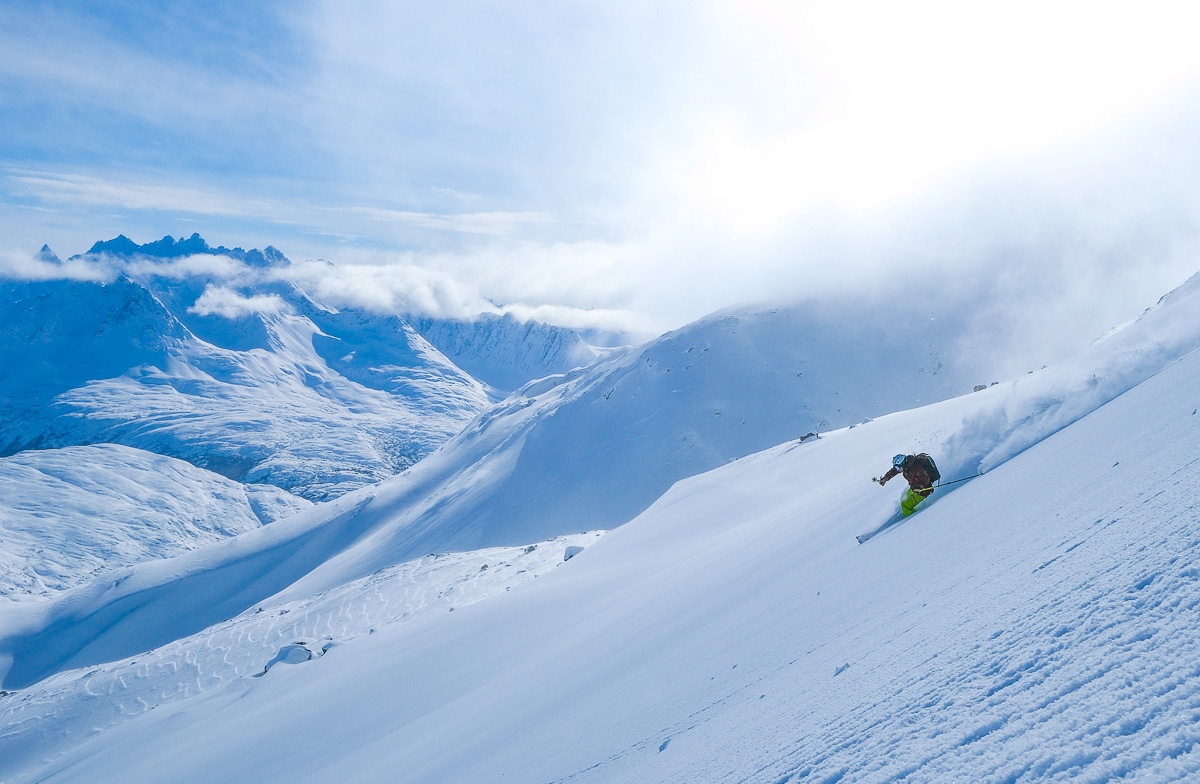How to Choose the Right Backcountry Skis for the Yukon
A great powder day at White Pass, 102 underfoot flat tail light rocker for stability and speed.
Winter is back and for many of us, that means it’s time to think about new gear.
Maybe you’re looking to buy your first pair of backcountry skis, replace an aging setup, or add something more specialized to your ski rack. Whether you’re a beginner or a seasoned skier, choosing the right skis isn’t always easy.
With hundreds of models on the market and endless reviews, ads, and opinions, the process can feel overwhelming. A new pair of skis is a significant investment so how do you know you’re making the right choice? How do you ensure the skis match your body type, your technical skills, your fitness level, and the kind of terrain you actually plan to explore?
Selecting the right backcountry skis is not just about performance — it’s also about safety and enjoyment.
To help you make a confident decision, here are five common mistakes to avoid when buying backcountry skis, especially here in the Yukon.
1. Misjudging Your Skill Level
The most important factor is choosing skis that truly match your technical level.
This requires being honest with yourself:
-
How comfortable are you in different snow conditions?
-
How do you handle variable terrain outside the groomers?
-
Are you a strong skier inbounds but less confident on touring gear with a heavy pack, tired legs, and unpredictable snow?
If you’re new to backcountry skiing, remember that your downhill ability on touring gear is often lower than on resort skis. That’s normal.
You should also consider your intentions:
Are you mainly chasing powder turns?
Do you prefer short laps or long missions with big vertical?
Are you planning to use the skis occasionally at the ski hill?
Your skills and goals will determine whether you should choose skis that are wider or narrower, longer or shorter, stiffer or more forgiving.
2. Choosing Skis That Are Too Long… or Too Short
As a general rule, backcountry skis should be close to your height.
Length affects:
-
Maneuverability (shorter = easier to turn)
-
Stability at speed (longer = more stable)
-
Floatation in soft snow
-
Efficiency in tight trees and couloirs
Long skis can be tiring in the forest or on steep kick turns, while skis that are too short may feel unstable, especially for bigger or aggressive skiers.
3. Going Too Wide
Wide skis have transformed powder skiing — but wider isn’t always better.
Unless you’re riding deep, light snow every day, you don’t need a super-fat ski to enjoy powder. Wider skis are heavier on the climb and can be awkward on icy sidehills — as any splitboarder can tell you.
In the Yukon, we rarely ski bottomless 50–70 cm dumps except in certain Alaskan zones.
For most skiers looking for a versatile setup:
-
95–105 mm underfoot is ideal for Yukon conditions.
-
If you want apowder oriented ski, 110–115 mm is more than enough — and often those skis are already highly specialized in that type of skiing.
104 underfoot with a good rocker for short turn and to play in the tree.
4. Ignoring Ski Flex (Rigidity)
Flex, how stiff or soft a ski is plays a huge role in how it behaves. Also your body type and weight will also drive your choice.
-
Soft skis are forgiving, easier for beginners, and more comfortable in tricky snow.
But they lack stability on hardpack and at speed. -
Stiff skis are precise, powerful, and stable in challenging terrain.
But they are less forgiving if your technique or balance is off.
Flex is closely tied to construction, weight, and performance.
A well-chosen flex profile will make skiing more enjoyable and safer.
5. Rocker or Not?
Rocker refers to the upward curve at the tip and sometimes the tail of the ski—like the bottom of a rocking chair. This “reverse camber” helps:
-
Improve float in powder
-
Make turn initiation easier
-
Increase maneuverability in soft or chopped snow
However, rocker also reduces:
-
Edge hold
-
Stability on firm or icy snow
-
Precision in steep, technical terrain
Moderation is key.
Extreme rocker shapes exist, but they’re designed for very specific skiing styles or deep-snow playgrounds—not for daily use in the Yukon. For most backcountry skiers, a moderate tip rocker with traditional camber underfoot is the most efficient and versatile solution.
6. Falling for Marketing Hype
Ski brands love big claims: new shapes, new materials, new technologies.
Some innovations are real — many are just clever marketing.
Two skis may have very different designs yet feel almost identical on snow.
Focus on how the ski performs, not on buzzwords.
So What’s the Right Choice?
The best ski for you is a balance of:
-
length
-
width
-
flex
-
weight
-
profile (camber/rocker)
-
and price
Reviews and online comments are helpful, but don’t forget the value of speaking with professionals. Here in Whitehorse, we’re lucky to have a great local shop with passionate, knowledgeable staff and a solid selection of backcountry skis well-suited to Yukon terrain and conditions. So head to Icycle and have a look at what they offer..and they will be happy to help you.
Nowadays there are no bad skis, you just need to find the rights skis for the kind of skier you are and the type of ski you want to do.




